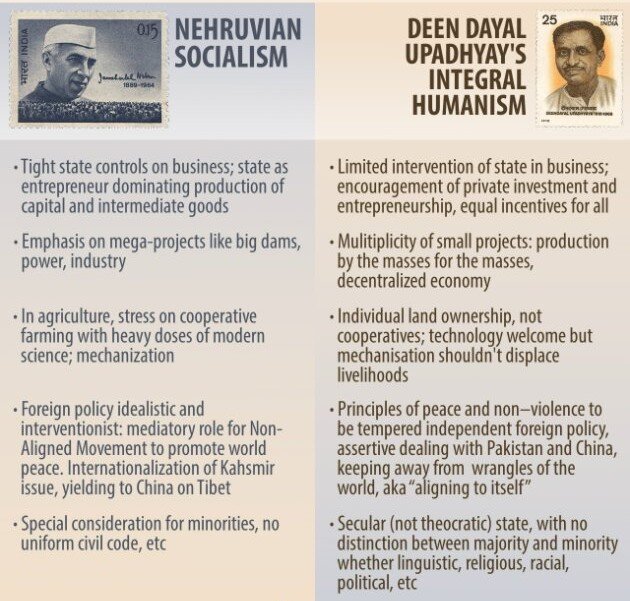Social Justice
Rural-Centric Development
- 06 Jul 2020
- 7 min read
This article is based on “India needs a new rural-centric development model” which was published in The Hindustan Times on 24/06/2020. It talks about developmental models which are rural-centric.
Migration in India has been a major feature of demographics, it has accelerated exponentially, from 72 million to 110 million, over the last decade. With one in four workers being essentially migrant, India has the second-largest migrant worker population (after China) in the world.
However, despite the best effort of both the central and state governments, Covid-19 pandemic has triggered the reverse migration of nearly 10 million migrant workers.
In order to tackle this migrant crisis, there is an urgent need to shift to a new paradigm of rural -centric economic development in which migration under economic distress or due to the lack of amenities can be minimised.
This new model can take inspiration from leaders like Mahatma Gandhi, the former president APJ Abdul Kalam and social activist Nanaji Deshmukh.
Models of Rural-Centric Development
Mahatma Gandhi: The aspiration for self-reliant development at the village level began with the Gandhian model of Swaraj.
- According to Gandhi, the concentration of either economic or political power would violate all the essential principles of participatory democracy and thereby of Swaraj.
- He visualised a comprehensive programme of constructive work, which included economic self-reliance, social equality and a decentralised political system at the village level.
- Village being the lowest unit of a decentralized system, politically a village has to be small enough to permit everyone to participate directly in the decision-making process.
APJ Abdul Kalam: Kalam, the missile man, had his own model for rural development, called Providing Urban Amenities in Rural Areas (PURA).
- His vision was to develop rural India through a cluster development system where 50-100 villages with common competencies and/or mutual markets could be horizontally or vertically integrated as PURA complexes.
- These villages would be linked through “four connectivities” — physical, electronic, knowledge and economic.
- The goal was to provide income and quality of life to all within PURA complex.
- While this model would promote some rural-rural migration would be acceptable, rural to urban migration would be minimised.
Nanaji Deshmukh: He called for self-reliant villages based on a model of Integral Humanism.
- In Deshmukh’s model, the collective social consciousness that promoted collective well-being was considered to be a cornerstone to next-generation rural development.
- In his work across 500 villages in India, especially in the Chitrakoot area (Madhya Pradesh), the successful implementation of the model called not just for zero unemployment and no one below the poverty line, but also zero internal legal disputes and no widow being denied remarriage.
Note:
- The idea of ‘Integral Humanism’ was presented by Deendayal Upadhyaya. The underlying principle of his philosophy is to create synthesis in man life with his society, state, and nation function as complementary to each other rather than being conflicting elements.
- Integral Humanism insist that every humans’ life is embodiment of harmonization not only in body, mind, and intellect but in all spheres, such as sharing duties as well as rights on a human-to-human, individual-to-family, family-to-village, family-to-society, society-to-nation basis.
Way Forward
The ideas of leaders like Mahatma Gandhi, APJ Abdul Kalam and others are much needed for addressing migrant crises and making self-sufficient villages. Apart from it some more steps that should be taken are as follow:
- Leveraging Technology for Self-reliant Village: In order to make 650,000-plus villages and 800 million citizens self-reliant, technology will have to play a critical role.
- In this context, there is a need to create a rural knowledge platform through active collaboration between the public and private sector.
- This will provide the expertise to take cutting edge technology deeper into villages and generate employment.
- For example, the Internet and Artificial Intelligence are being used extensively around the world to facilitate sustainable agriculture.
- Ensuring Financial Autonomy: To finance the re-engineering of these rural development models, ‘Atmanirbhar Village bonds’ could be issued to raise resources.
- Part of the mandated priority sector lending by scheduled commercial banks could be used to finance these bonds.
- Training Youth: The capacity of India’s youth to innovate needs to be unleashed in villages.
- In this context, there is a need to create a fresh curriculum in engineering, medical colleges and business schools to train the young workforce of rural India to operate in villages.
Conclusion
Unbridled Migration takes a toll on sustainability of urban spaces in India. However, in order for inclusive growth there is a need to bridge the gap between Bharat and India. Thus, there is a need for developing a sustainable rurban India to the centre of the development model.
|
Drishti Mains Question In order to bridge the gap between Bharat and India, there is an urgent need to shift to a new paradigm of rural -centric economic development. Discuss. |
This editorial is based on “A different track” which was published in The Indian Express on July 4th, 2020. Now watch this on our Youtube channel.







